The snow is beginning to fall and the slopes are opening up once again at this time of year. If you’re a ski enthusiast, you can’t wait to get outside and go skiing all day. If you have a dog, you should make sure that it is well-protected before you head to the slopes.
It’s necessary to take care when skiing because it may be a risky activity for both people and animals. Here are some different strategies for keeping them safe as you enjoy the slopes. Dogs require a lot of activity, so whenever you can, bring them along when you go skiing! They’ll enjoy the clean air and interesting surroundings, and you’ll know they’re secure and content.
Contents
- 1. Make Sure Your Dog Has Identification Tags In Case They Get Lost
- 2. Use a Harness or Dog Pack
- 3. Make Sure You Have Someone to Watch Your Dog While You Ski
- 4. Take Breaks Often
- 5. Be Prepared
- 6. Stay On Trails and Slopes
- 7. Be Mindful of Where You Let Your Dog Off Leash
- 8. Provide Sun Protection and Shade For Your Dog
- 9. Provide Adequate Protection from the Cold
- 10. Pack Appropriate Gear For Your Dog
- 11. Know the Limits of Your Dog
- Conclusion
1. Make Sure Your Dog Has Identification Tags In Case They Get Lost

Source: dog-tap.com
Make sure your dog is wearing a collar with an up-to-date ID tag bearing your cell phone number. Additionally, you may add GPS tracking to their collar in case they become separated from you while skiing. If your dog becomes frightened and flees, this is the best approach to guarantee their safe return. You may now get the information on their microchip updated with your most recent contact details. Furthermore, you may frequently register your dog as a “service animal,” giving you access to extra services in case of an emergency.
2. Use a Harness or Dog Pack
For extreme activities like skiing and snowboarding, a snow sport harness or canine backpacks are devised, giving you more control as you go down the mountain. To prevent the leash from becoming tangled up in your skis or poles, it should be attached to a belt loop on the harness.
Additionally, these kinds of accessories can store items like water bottles and snacks that may be required when spending extended periods of time outside. In order to make them more visible in case they stray, they also have reflective material stitched into them. Furthermore, one can carry dog snow goggles to help protect the eyes from snow and wind blasts.
3. Make Sure You Have Someone to Watch Your Dog While You Ski
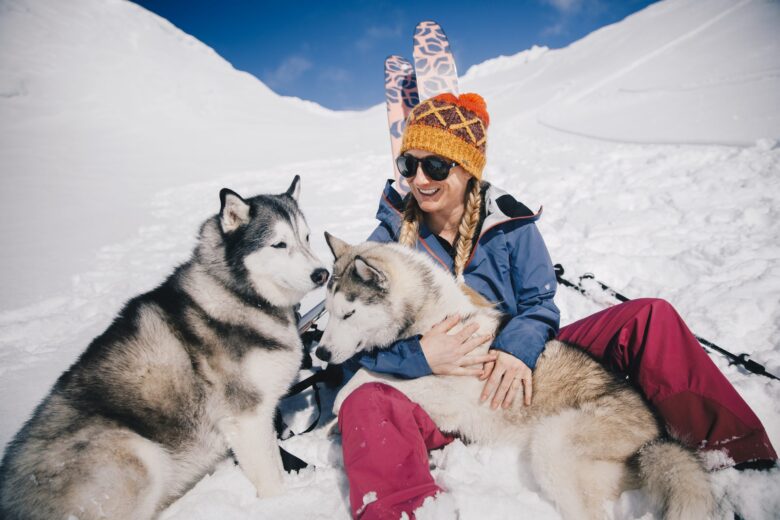
Source: osprey.com
If you’re skiing at a resort, many provide kennels or daycare facilities where someone can monitor your dog while you hit the slopes. If not, make sure someone is nearby who can keep an eye on them until you get back. Many individuals make the mistake of keeping their pet in the car for an excessively long period of time, which can soon turn harmful owing to the cold. Make sure your pet has access to food and water as well, in case they become hungry throughout the day.
4. Take Breaks Often
When it comes to skiing, dogs typically don’t have the same endurance as people, so be sure to give them rest breaks throughout the day. Bring food for both of you if you can, and make sure they have access to lots of water at all times. In order to prevent your dog from becoming overstimulated by all the people on the slopes, you might want to plan your ski vacation to take place outside of peak hours. Many people also think it’s better to keep your dog away from slopes that are too challenging for you to handle.
5. Be Prepared
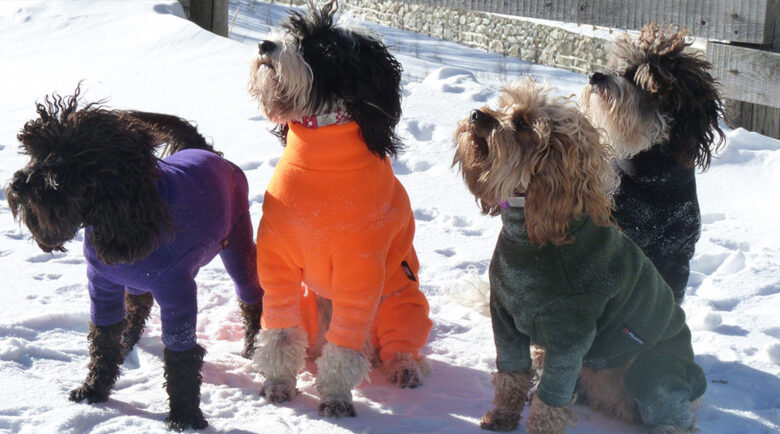
Source: eurotunnel.com
When skiing, being prepared is always vital, but taking a pet along makes it much more crucial. For the two of you, pack extra layers of clothes and blankets in case the weather unexpectedly changes or the temperature lowers. A dog-friendly backpack with features like straps to keep them close and secure while skiing is another option to think about. Additionally, make sure to pack some first aid supplies just in case.
6. Stay On Trails and Slopes
While skiing, it might be tempting to shave a few seconds off your time, but it’s better to keep your dog on approved slopes and paths whenever you can. This will assist you both in avoiding any potential dangers like tree branches or sharp pebbles that can hurt them. Additionally, make sure you are constantly aware of your surroundings and aware of the location of any off-limits areas.
7. Be Mindful of Where You Let Your Dog Off Leash
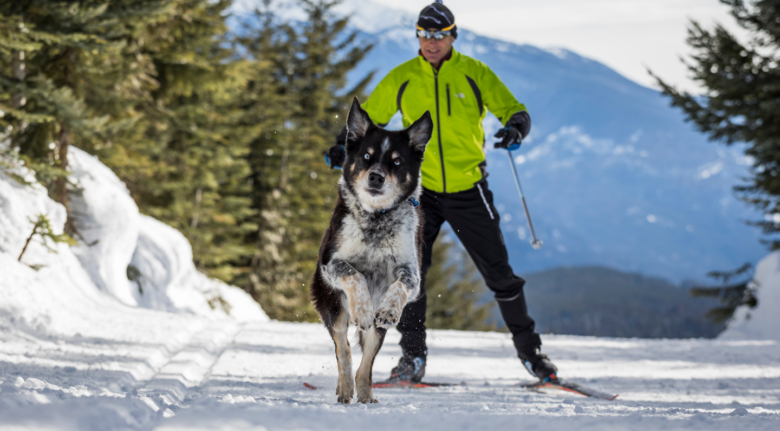
Source: whistlersportlegacies.com
In order to prevent your dog from getting lost or hurt when you let them off leash, it’s crucial that they remain in a defined area. Additionally, be aware of the laws that apply to specific locations; some may not permit dogs at all, while others demand that they wear leashes at certain times of the day. This is a crucial aspect to take into account before letting them run amok.
8. Provide Sun Protection and Shade For Your Dog
Invest in protective eyewear, dog-friendly sunscreen, and, if necessary, a dog coat with a high SPF rating. To prevent overheating when it’s hot and sunny outside, make sure your dog has access to enough shade and water at all times.
9. Provide Adequate Protection from the Cold
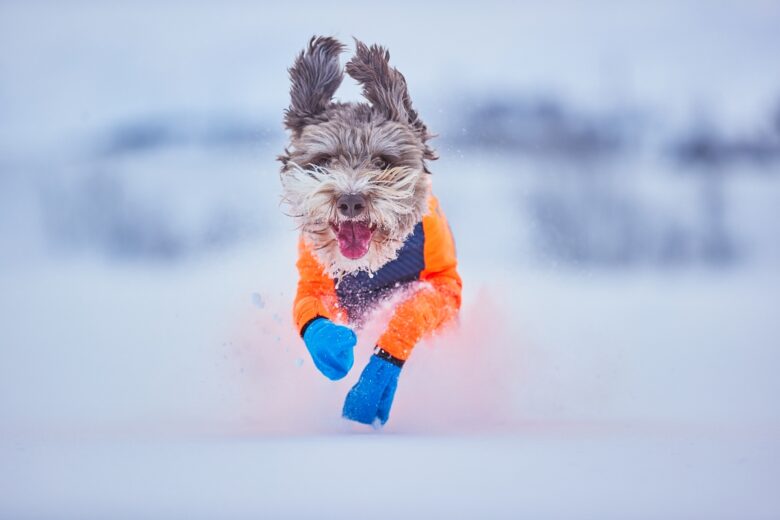
Source: nonstopdogwear.com
Make sure to pack a warm coat or blanket for your canine companion to wear while skiing because the chilly weather can make them uncomfortable. Additionally, watch out for behaviors like shivering, lethargy, slowing down, or whining that indicate their extremities are becoming too cold. If this occurs, stop and allow them to warm up inside where it is warmer.
10. Pack Appropriate Gear For Your Dog
Bring your dog’s food, water, and treats, among other necessities. When out on the slopes, a thick coat is also essential to keep them safe from the cold. Additionally, if there is ice or snow around, having booties to cover their paws is a good idea. When bringing your dog with you, it’s also crucial to conduct the appropriate research on dog-friendly ski resorts.
11. Know the Limits of Your Dog
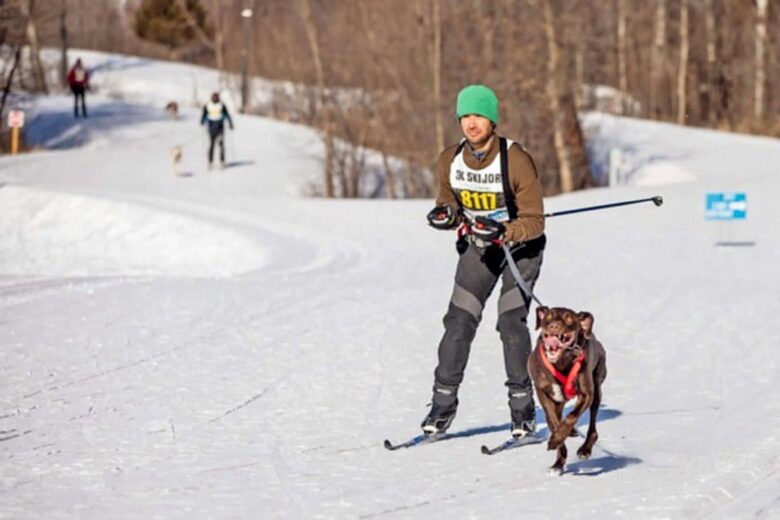
Source: dailypaws.com
Some breeds of dogs may not have the endurance to keep up with you on the trails, and not all dogs are appropriate for skiing. Before leaving, it’s essential to evaluate their age, size, breed, and degree of physical condition. Find alternate activities that you can both enjoy together if they don’t have the mobility or experience.
Conclusion
In conclusion, the aforementioned advice will assist in keeping you and your dog safe while skiing. Remember that dogs need a lot of exercise, so whenever you can, take them skiing with you! You’ll know they’re safe and content because they’ll enjoy the fresh air and fascinating surroundings.
